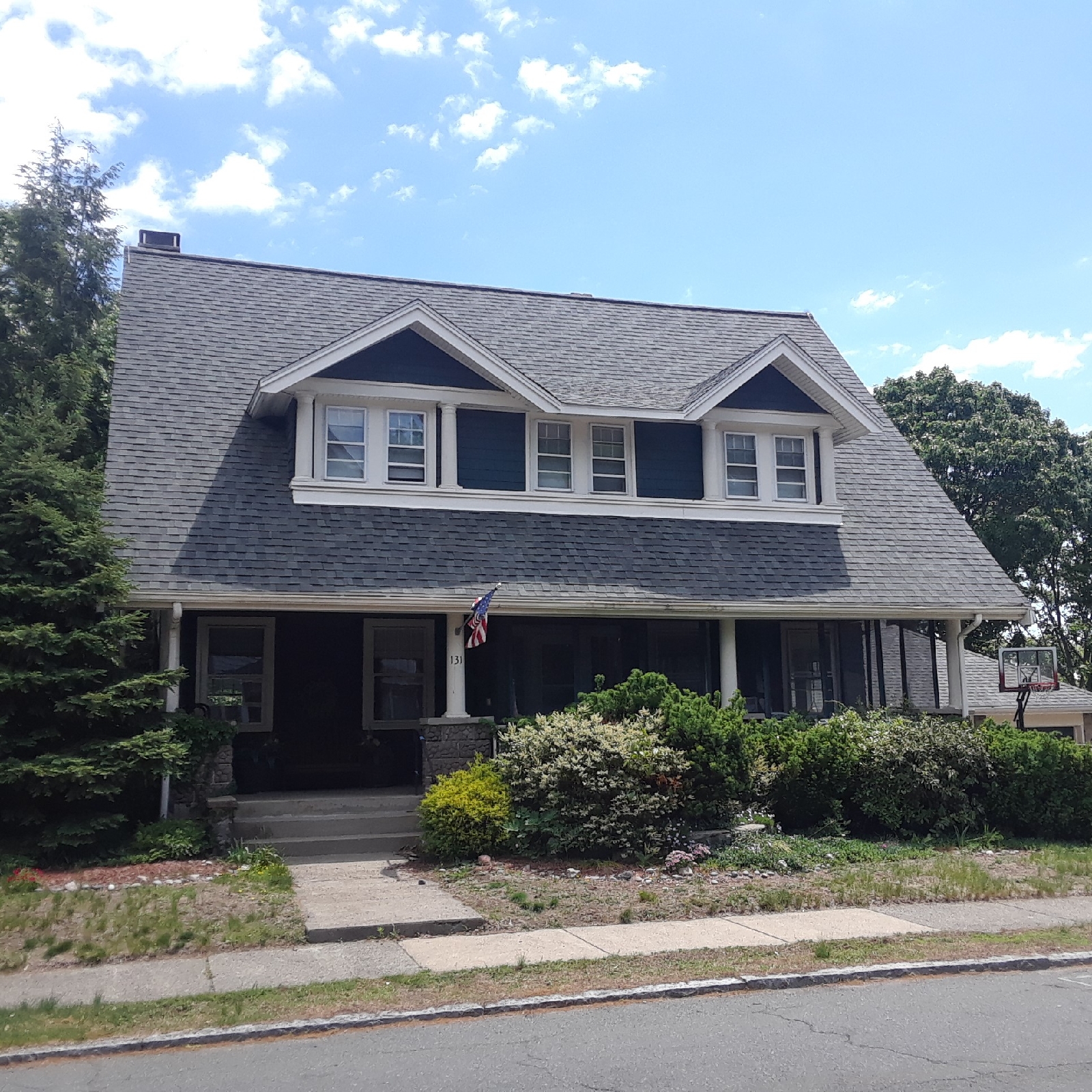In the first decades of the 20th century, architects on the West Coast developed their own simplifying response to the complexity of Victorian design which would come to be called the California Bungalow. “Bungalow” is a term of Indian origin that arrived in the United States by way of Great Britain, but in its American context it generally refers to a one to two story home with a wide front veranda and dormers emerging from a sloping roof. Such houses are sometimes called Craftsman Bungalows, in that their use of local materials and simplicity of style took inspiration from the ideas of Gustav Stickley, publisher of American Craftsman magazine, a popular periodical of the time.
Here in Melrose, we have a few examples of the form, and the most striking is undoubtedly 102 Richardson Road. The house has a simple layout that is not dissimilar to many others in Melrose, but a few bold architectural choices have given it a unique appearance. The roof is curved in a way that may call to mind East Asian building traditions. The dormer is a long set of narrow windows called squints. The nearly full-length porch is supported by squat, round columns set on wooden piers, leading up to a series of rounded arches. The house sits on a raised foundation, and one enters the front door by ascending a wide staircase. All of these effects make the house feel like a temple atop a hill, giving it a grandeur that competes with its Victorian neighbors despite its essential simplicity of form.
One street over, 131 Ashland Street is something of a composite, a kind of shingle-style bungalow with Classical elements. The house is in the basic bungalow format, a full two stories in height and dominated by an overhanging shingled roof that shelters its full-length front porch. The porch is supported by rounded columns resting on stone block piers, and those same columns reappear around the three dormered windows in the roof above. This house appears to have been a bit of an experiment. Houses of the 20th century would largely lack the ostentation of the previous era, but as these examples show, they would not lack for originality.



No comments:
Post a Comment